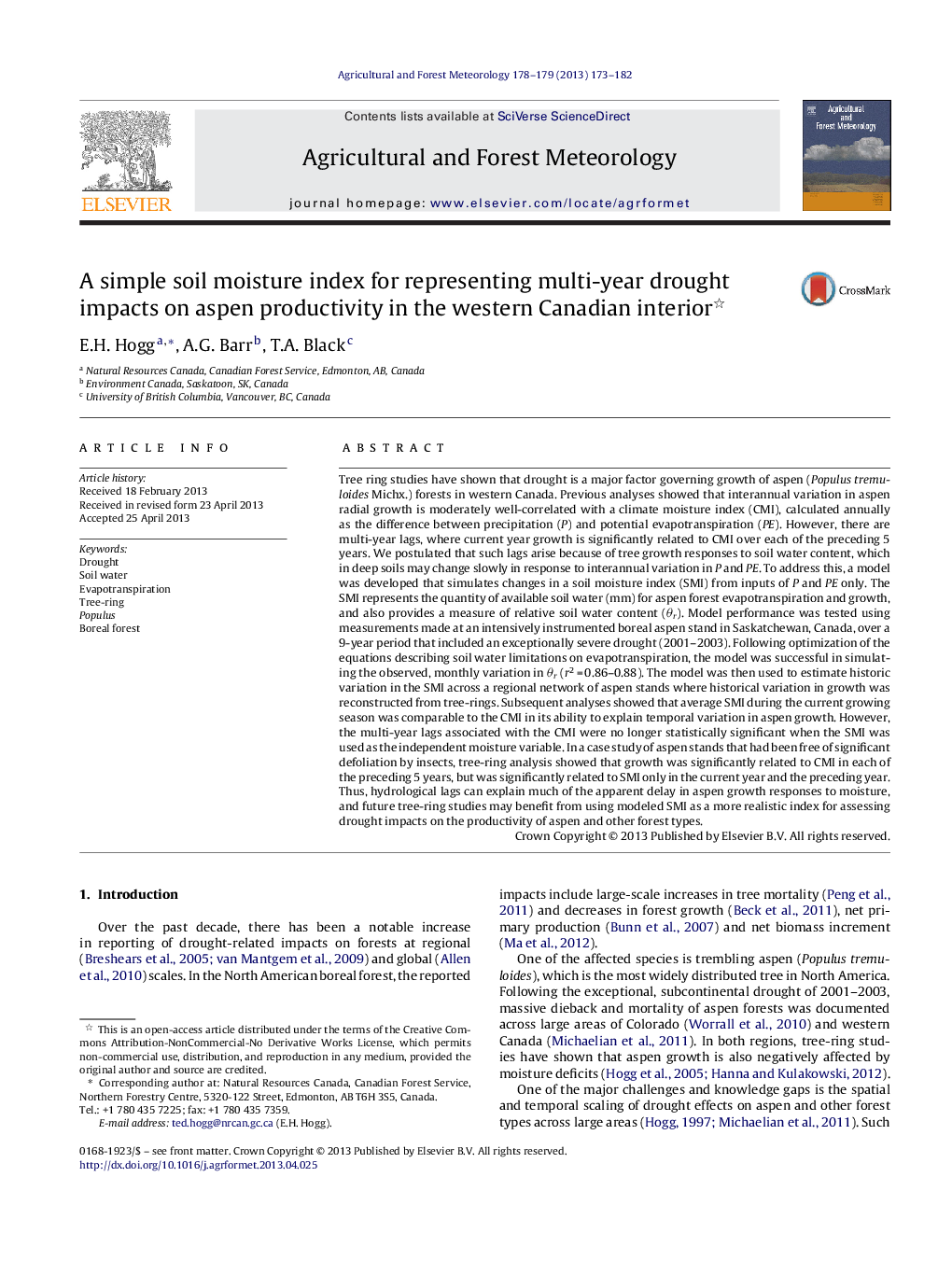| کد مقاله | کد نشریه | سال انتشار | مقاله انگلیسی | نسخه تمام متن |
|---|---|---|---|---|
| 6537872 | 158348 | 2013 | 10 صفحه PDF | دانلود رایگان |
عنوان انگلیسی مقاله ISI
A simple soil moisture index for representing multi-year drought impacts on aspen productivity in the western Canadian interior
ترجمه فارسی عنوان
یک شاخص رطوبت خاک ساده برای نشان دادن اثرات خشکسالی چند ساله بر بهره وری نسبی در داخل غربی کانادایی
دانلود مقاله + سفارش ترجمه
دانلود مقاله ISI انگلیسی
رایگان برای ایرانیان
کلمات کلیدی
موضوعات مرتبط
مهندسی و علوم پایه
علوم زمین و سیارات
علم هواشناسی
چکیده انگلیسی
Tree ring studies have shown that drought is a major factor governing growth of aspen (Populus tremuloides Michx.) forests in western Canada. Previous analyses showed that interannual variation in aspen radial growth is moderately well-correlated with a climate moisture index (CMI), calculated annually as the difference between precipitation (P) and potential evapotranspiration (PE). However, there are multi-year lags, where current year growth is significantly related to CMI over each of the preceding 5 years. We postulated that such lags arise because of tree growth responses to soil water content, which in deep soils may change slowly in response to interannual variation in P and PE. To address this, a model was developed that simulates changes in a soil moisture index (SMI) from inputs of P and PE only. The SMI represents the quantity of available soil water (mm) for aspen forest evapotranspiration and growth, and also provides a measure of relative soil water content (θr). Model performance was tested using measurements made at an intensively instrumented boreal aspen stand in Saskatchewan, Canada, over a 9-year period that included an exceptionally severe drought (2001-2003). Following optimization of the equations describing soil water limitations on evapotranspiration, the model was successful in simulating the observed, monthly variation in θr (r2 = 0.86-0.88). The model was then used to estimate historic variation in the SMI across a regional network of aspen stands where historical variation in growth was reconstructed from tree-rings. Subsequent analyses showed that average SMI during the current growing season was comparable to the CMI in its ability to explain temporal variation in aspen growth. However, the multi-year lags associated with the CMI were no longer statistically significant when the SMI was used as the independent moisture variable. In a case study of aspen stands that had been free of significant defoliation by insects, tree-ring analysis showed that growth was significantly related to CMI in each of the preceding 5 years, but was significantly related to SMI only in the current year and the preceding year. Thus, hydrological lags can explain much of the apparent delay in aspen growth responses to moisture, and future tree-ring studies may benefit from using modeled SMI as a more realistic index for assessing drought impacts on the productivity of aspen and other forest types.
ناشر
Database: Elsevier - ScienceDirect (ساینس دایرکت)
Journal: Agricultural and Forest Meteorology - Volumes 178â179, 15 September 2013, Pages 173-182
Journal: Agricultural and Forest Meteorology - Volumes 178â179, 15 September 2013, Pages 173-182
نویسندگان
E.H. Hogg, A.G. Barr, T.A. Black,
